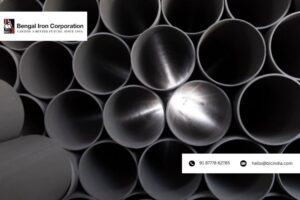Ever wondered what makes industrial pipelines endure extreme heat, pressure, and vibration without cracking or leaking? The answer lies in the remarkable materials that power universal expansion joints manufacturer designs. These materials aren’t chosen randomly — they’re selected to balance flexibility, strength, and corrosion resistance for demanding industrial environments like those found across Bangalore’s manufacturing and process sectors.
Understanding the Role of Universal Expansion Joints
Before diving into the materials, it’s important to understand the function. Universal expansion joints are flexible connectors that absorb movements in pipelines — whether caused by temperature fluctuations, vibration, or pressure changes. In industries such as power generation, HVAC, oil & gas, and water treatment, these joints prevent stress-related damage, ensuring longer service life and minimal maintenance downtime.
Top Materials Used in Manufacturing Universal Expansion Joints
Choosing the right material defines not only the durability of the expansion joint but also its compatibility with specific applications. Let’s explore some of the most trusted materials used in the industry today:
1. Stainless Steel – The Industry Workhorse
Stainless steel is by far the most widely used material in universal expansion joints. Grades like SS304, SS316, and SS321 offer excellent resistance to corrosion, oxidation, and high temperatures — making them ideal for chemical plants and power stations.
- High corrosion resistance: Perfect for environments exposed to moisture or chemicals.
- Temperature tolerance: Can withstand up to 800°C depending on the alloy.
- Durability: Offers superior fatigue life under cyclic loading conditions.
In fact, according to AZoM Materials, stainless steel’s strength retention at high temperatures makes it one of the most reliable materials for thermal expansion control in process pipelines.
2. Inconel and Monel – For Extreme Conditions
When the environment turns aggressive — think petrochemical refineries or offshore drilling units — alloys like Inconel (nickel-chromium) and Monel (nickel-copper) step in. These materials retain their mechanical strength even in corrosive and high-pressure applications.
- Inconel: Exceptional resistance to oxidation and creep deformation.
- Monel: Superior performance in seawater and acidic conditions.
- Benefit: Extended service life reduces replacement frequency and costs.
It’s no surprise that a reputed universal joint manufacturer often relies on these superalloys when designing for oil refineries or marine engineering systems in India’s coastal industries.
3. Rubber and Elastomers – Flexibility First
For systems requiring high flexibility and vibration absorption, rubber-based joints are unbeatable. Materials such as EPDM, Neoprene, and Nitrile are commonly used for water supply lines, HVAC systems, and light chemical processing units.
- EPDM: Ideal for hot water and steam applications.
- Neoprene: Resistant to oils and mild chemicals.
- Nitrile: Perfect for petroleum-based fluids.
These materials provide flexibility and resilience while being budget-friendly, making them suitable for medium-pressure systems commonly seen in Bangalore’s commercial infrastructure projects.
4. PTFE (Teflon) – The Non-Reactive Marvel
PTFE, or Teflon, is a non-metallic material known for its chemical inertness and low friction. It’s often used as a liner material inside metallic bellows to enhance performance in highly corrosive environments like acid transfer systems.
- Chemical resistance: Virtually unaffected by most industrial acids and solvents.
- Low maintenance: Reduces wear and fouling inside the pipe system.
- Application: Common in pharmaceutical, food, and chemical industries.
5. Fabric-Reinforced Materials – Lightweight and Versatile
Fabric expansion joints use materials such as fiberglass, aramid, and silica fabrics combined with coatings like silicone or fluoropolymers. They handle low-pressure gas flows and accommodate large movements without adding much weight to the pipeline.
These are particularly useful in Bangalore’s growing renewable energy sector, especially in flue gas systems for biomass and thermal power plants.
Why Material Choice Matters?
The selection of material for universal expansion joints can make or break an installation. The right combination ensures not only leak-free performance but also longevity, energy efficiency, and reduced maintenance costs. Factors such as temperature range, media composition, movement type, and installation environment must all be evaluated before choosing the material.
In short, choosing a reliable manufacturer that understands these nuances — like a trusted universal expansion joints manufacturer — ensures consistent performance and value for money.
FAQs on Universal Expansion Joint Materials
1. Which material is best for high-temperature pipelines?
Stainless steel and Inconel are the top choices for high-temperature systems due to their excellent heat and oxidation resistance.
2. Are rubber expansion joints suitable for industrial use?
Yes, especially in HVAC, water treatment, and low-pressure systems where vibration damping and flexibility are more critical than extreme temperature resistance.
3. How long do PTFE-lined expansion joints last?
PTFE-lined joints typically last 8–10 years, depending on chemical exposure, temperature, and installation conditions.
4. Can multiple materials be combined in one joint?
Absolutely. Many manufacturers combine metal and non-metallic materials to achieve a balance of flexibility, chemical resistance, and durability.
Final Thoughts
Universal expansion joints may seem like minor components, but they play a critical role in keeping industrial systems running safely and efficiently. The choice of materials — from stainless steel and Inconel to PTFE and rubber — directly impacts the joint’s lifespan and performance. For industries across Bangalore, partnering with a trusted universal expansion joints manufacturer ensures each system runs at its full potential, no matter the conditions.





